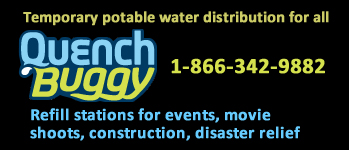
|

8/30/2024
WT Staff
 August 30, 2024 updated 141 pm PDT August 30, 2024 updated 141 pm PDT
Clear Lake, Diaz Lake, Lago Los Osos, Big Break HAB Danger advisories posted
WT HAB Tracker from the satellite monitoring program of the NOAA National Centers for Coastal Ocean Science(NCCOS) and State sources where available
California has been included as a priority for advanced detection and monitoring of HABs, to safeguard drinking water quality and safety for people and pets around recreational water bodies. The Cyanobacteria Assessment Network (CyAN) is a collaborative effort by NOAA, NASA, USGS, US Army Corps of Engineers with funding from the CDC and others. The focused effort of these agencies has accelerated the development of technologies for sensing and monitoring the harmful blooms, leading to better understanding of their growth, movement and potential toxicity. With careful monitoring and knowledge transfer to and from the local experts, negative health effects can be minimized. According to the National Centers for Coastal Ocean Science forecasting program information on line, "We have now reached a point in several regions where the understanding of these blooms is mature enough to put into place the detection and monitoring tools, and to bring these systems into an operational capacity."
California
The latest freshwater HAB Bloom Update is out August 29 with twelve HAB DANGER advisories and twelve Warning advisories posted. Lindo Lake in San Diego County remains on the Danger list along with Lake Anza, Diaz Lake, Lago Los Osos, Arascadero Lake, Contra Loma Reservoir, Big Break Shoreline Regional. HAB Warning advisories have been issued for twelve sites including Crowley Lake, Clear Lake, Lake Elsinore, Guajome Lake. The HAB warning advisory carries the same caption as the danger advisory, with the exception that fish fillets cleaned with tap water or bottled water and properly cooked can be consumed. This water is still not considered safe for wading or swimming, and shellfish should not be consumed. Note that water containing HABs likely also contains toxins, the water cannot be made safe for consumption by boiling. See the full list of Danger and Warning level advisories here.
Safe Drinking Water Act
Living in California has some serious advantages in the drinking water department.
According to the US EPA Enforcement and Compliance online records, California currently has 7416 drinking water facilities holding active permits. Taken together, these facilities handle drinking water for close to 39 million people. Remarkably, just twenty of these facilities have been cited with serious violations of the Safe Drinking Water Act in the last three years. These facilities are relatively small, serving on average 228 people. As such, the number of Californians supplied by serious violator facilities is less than 5000 persons, .001% of the population.
Compare this with New York - half the population with 800 more drinking water facilities to inspect. Of the 8205 permitted facilities, 70 are serious violators serving on average 1833 people. A total of 128,285 New Yorkers rely on serious violators for their drinking water, that's .65% of the total population in NYS. Ohio has around 11.8 million residents served by 4216 drinking water facilities. Of these, 58 are serious violators, 1655 Ohio residents on average for each EPA Enforcement Priority facility, .8% of the Ohio population. Georgia, with around 10.7 million residents and 2383 drinking water facilities has 29 serious violators handling drinking water for 47 thousand Georgians, that's around 1620 people for each serious violator facility, .4% of the population. Louisiana has the lowest population in the WT coverage area, 4.6 million people, served by 1260 facilities. One hundred and six of these licensed facilities, some public and some private have significant SDWA violations, serving almost 400 thousand citizens, average 3774 people per facility, 8.7% of the population.
For the mathematicians and statisticians out there, check this math, the likelihood that your drinking water comes from a serious violator facility is one in 100 thousand in California.
|
|
|
All rights reserved 2025 - WTcal - This material may not be reproduced in whole or in part and may not be distributed,
publicly performed, proxy cached or otherwise used, except with express permission.
|
| 




